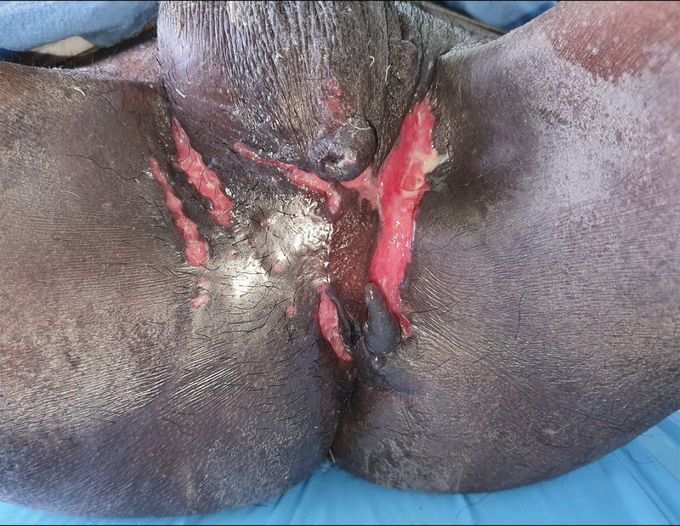


Knife-Cut Ulcers in Crohn’s Disease
A 30-year-old man with Crohn’s disease presented to the dermatology clinic with fatigue, abdominal pain, bloody diarrhea, and multiple painful ulcers in his groin and perineal area. He had a history of severe colonic and perianal Crohn’s disease, for which he had received treatment with sulfasalazine and glucocorticoids and had undergone surgical resection. At the time of the current presentation, he had a Crohn’s disease flare. Physical examination of the skin showed deep, linear erosions across the perineum and inguinal folds, on the scrotum and penile shaft, and in the intergluteal cleft. Skin swabs were negative for bacterial, fungal, herpes simplex viral, and tubercular infections. A diagnosis of “knife-cut” ulcers resulting from Crohn’s disease was made. These ulcers are a cutaneous manifestation of Crohn’s disease in which noncaseating, granulomatous inflammation is observed on skin biopsy that is similar to that observed on gastrointestinal biopsy. Adalimumab was prescribed, and at follow-up at 4 weeks, both the gastrointestinal symptoms and the skin lesions had abated.

